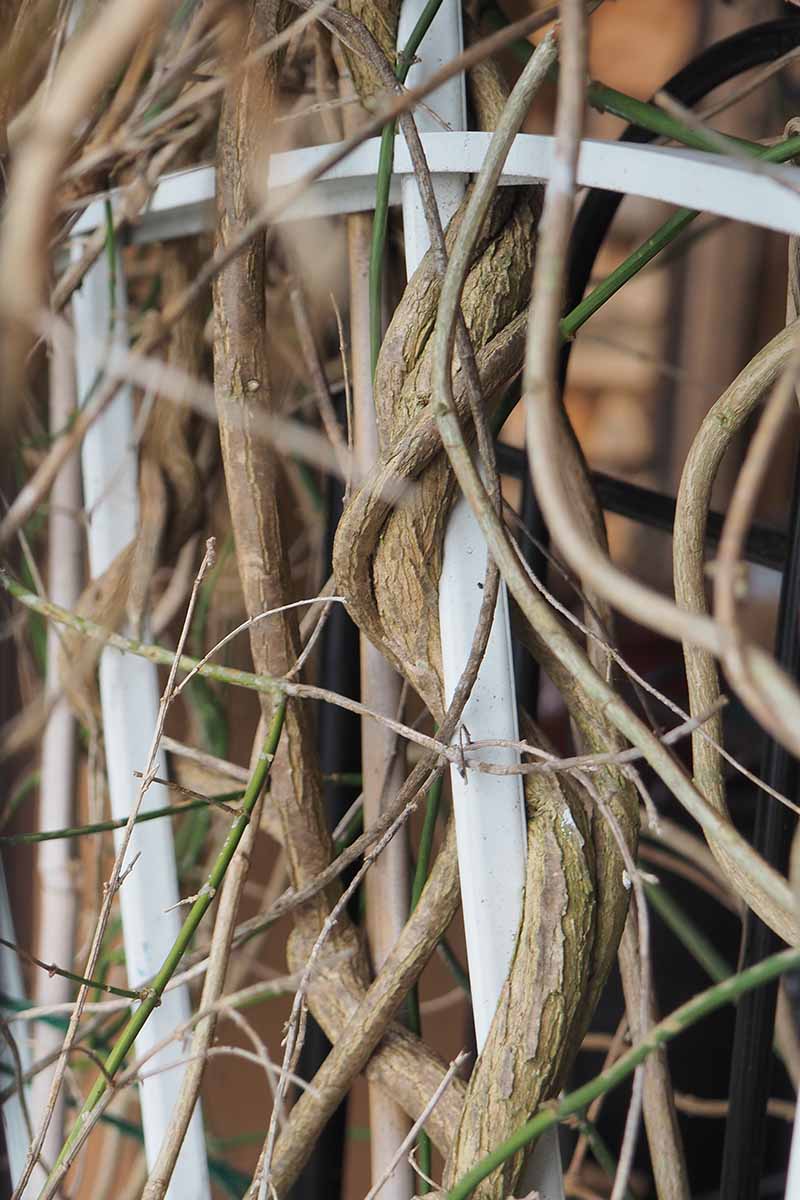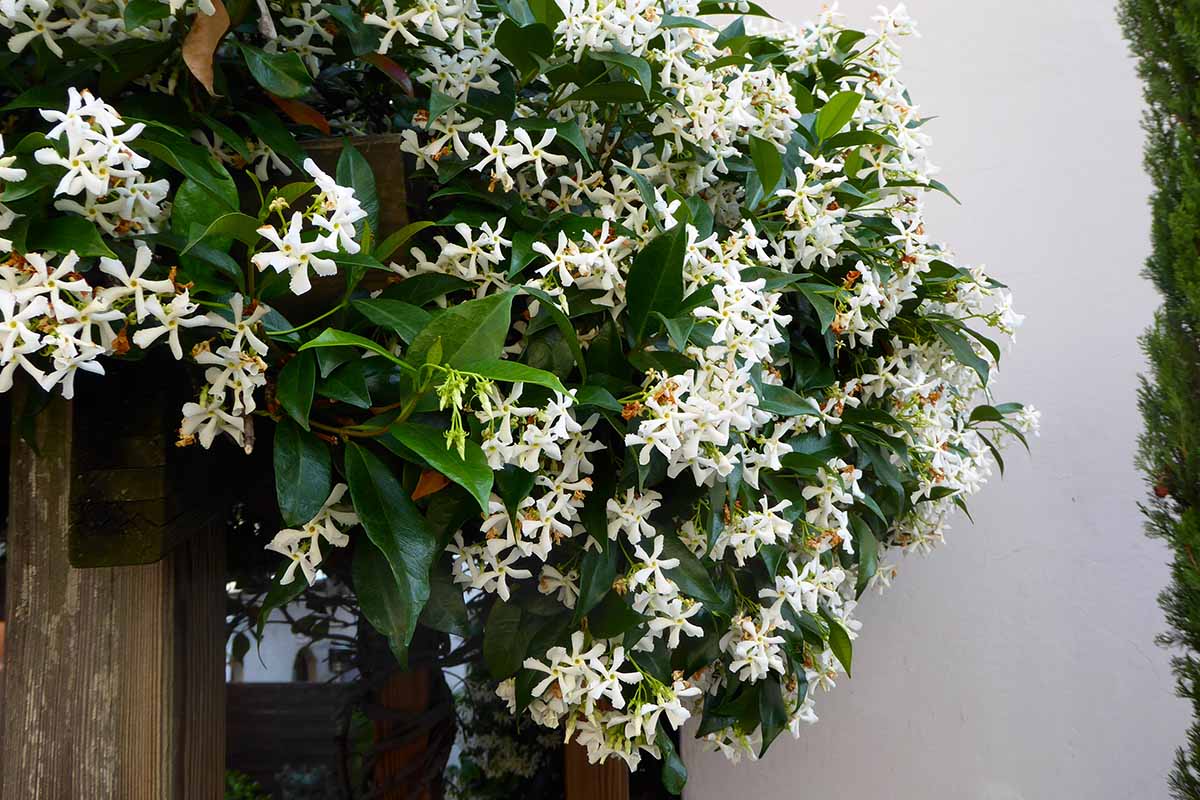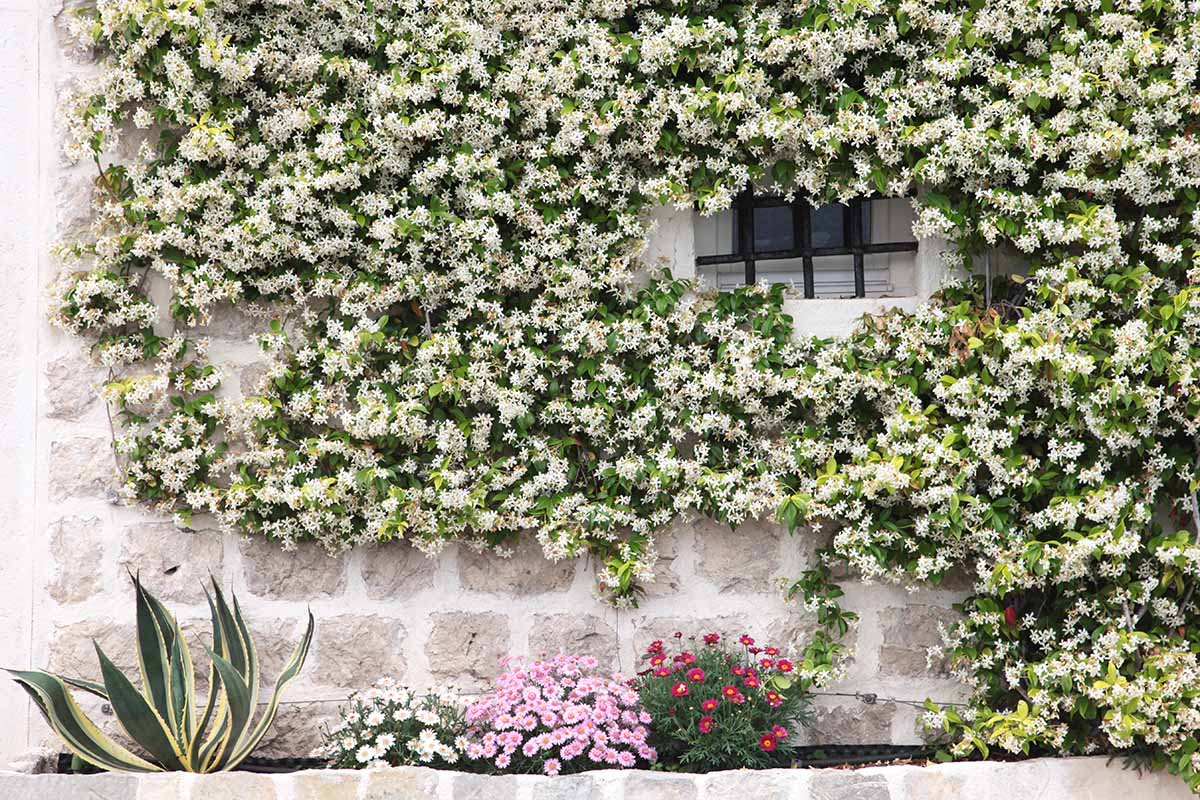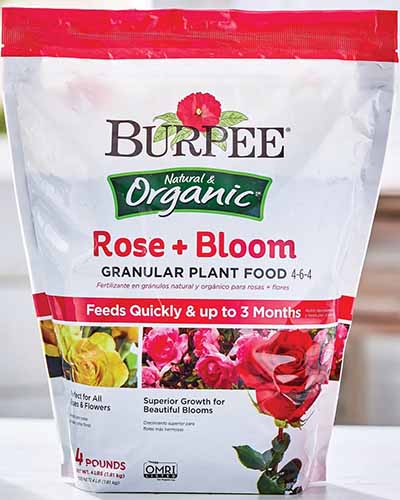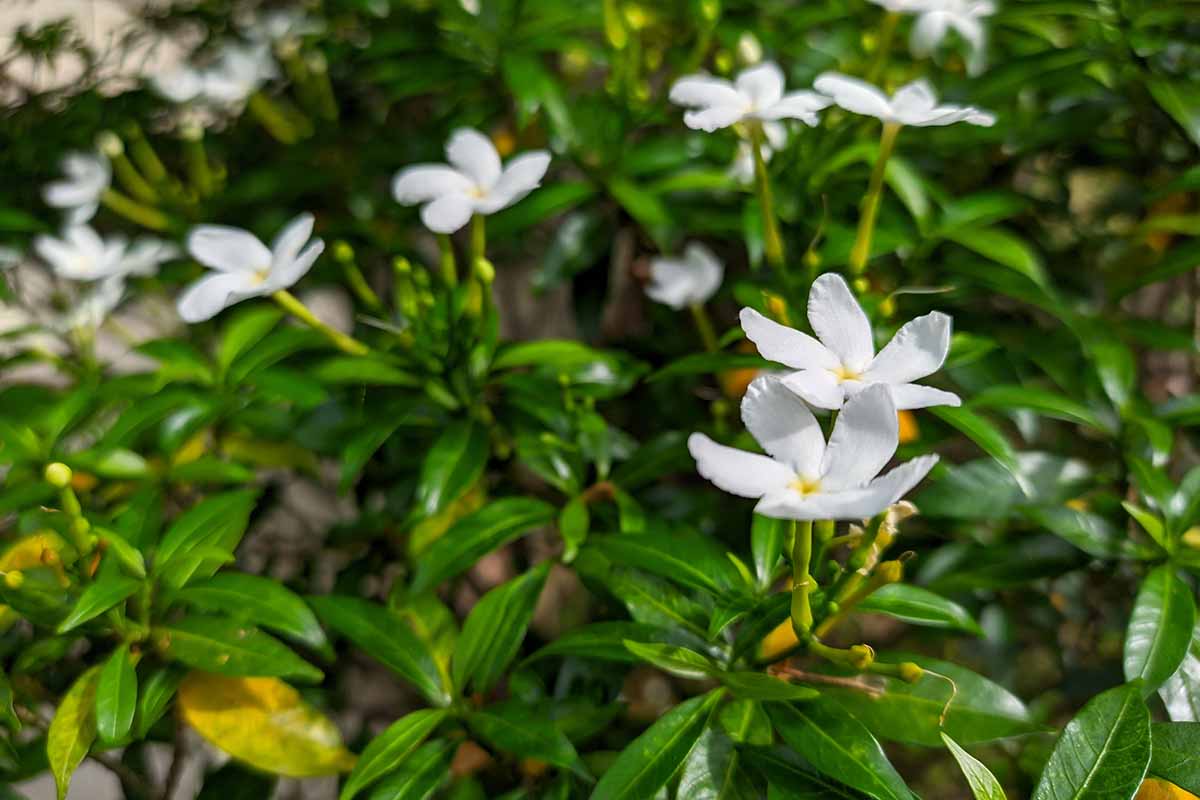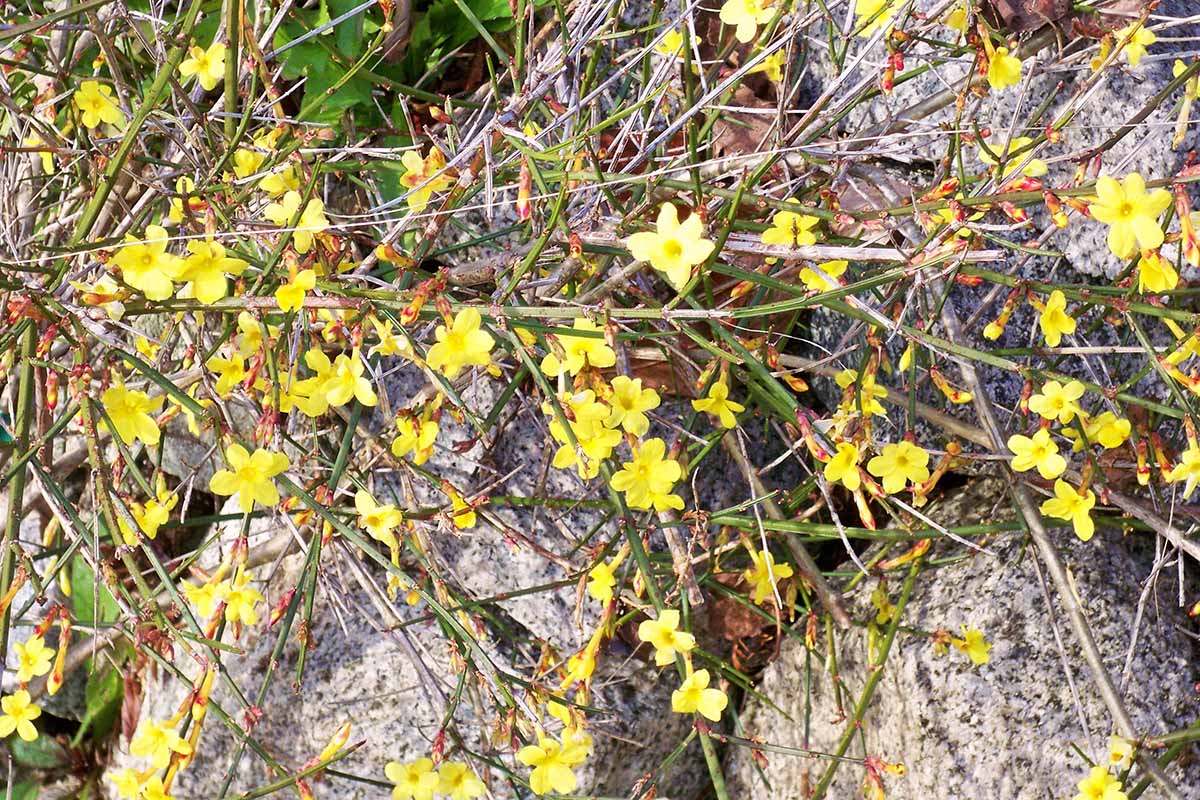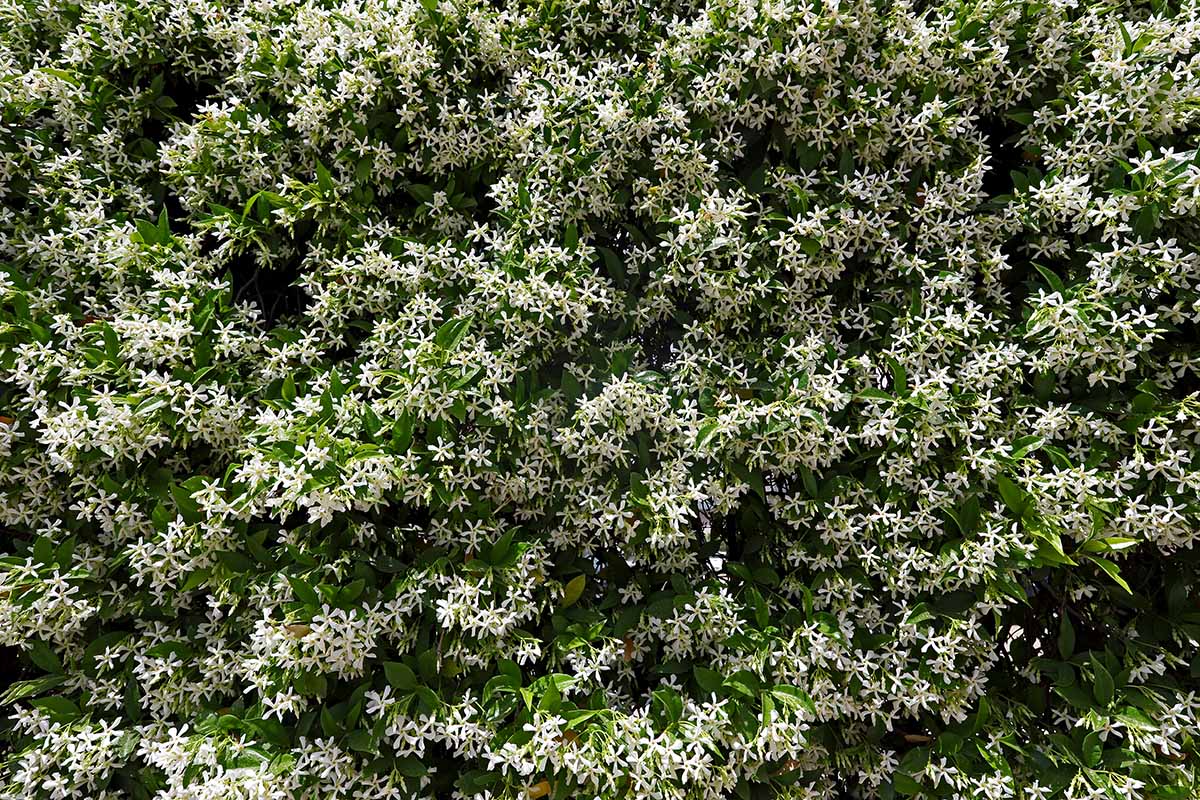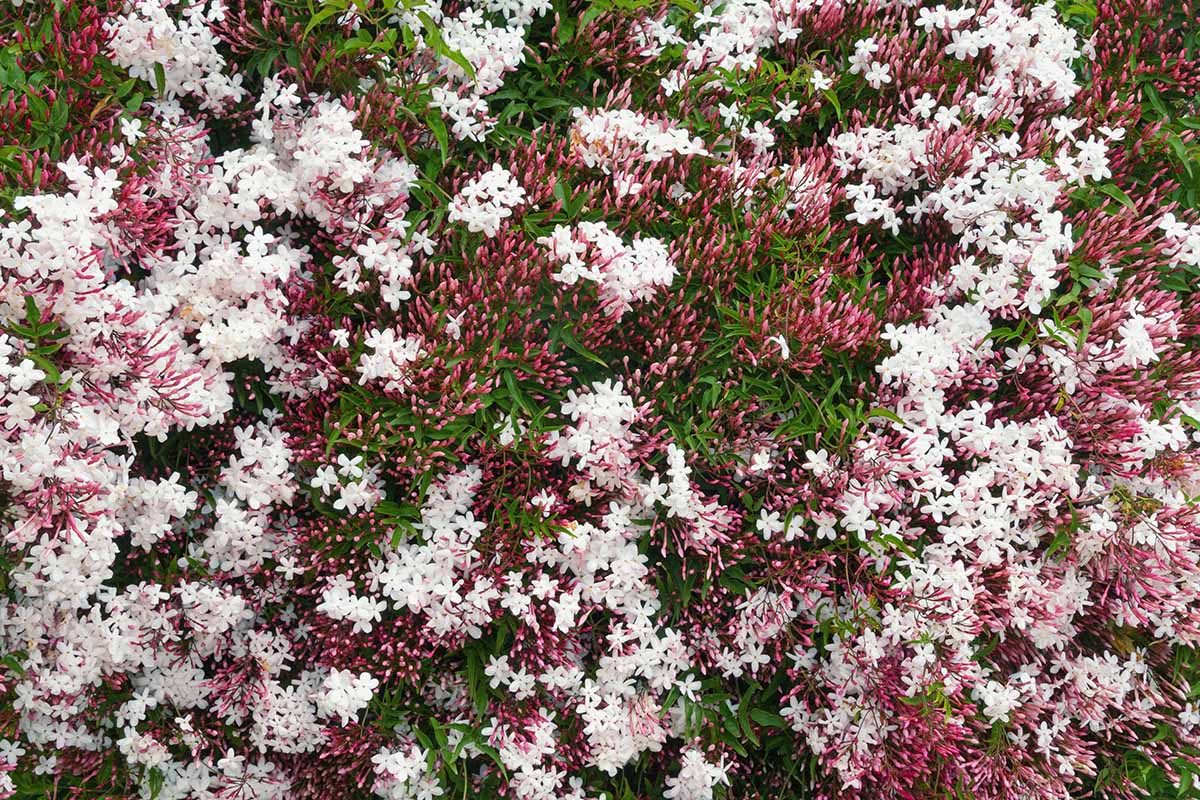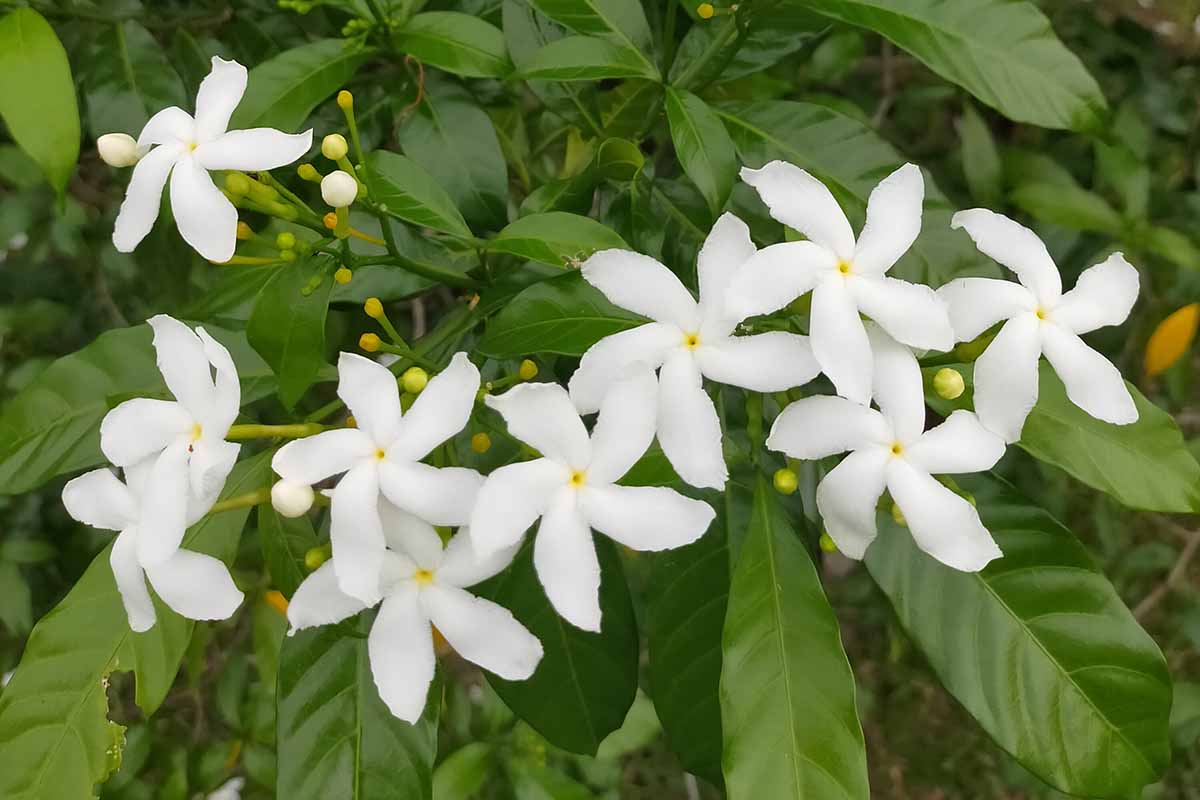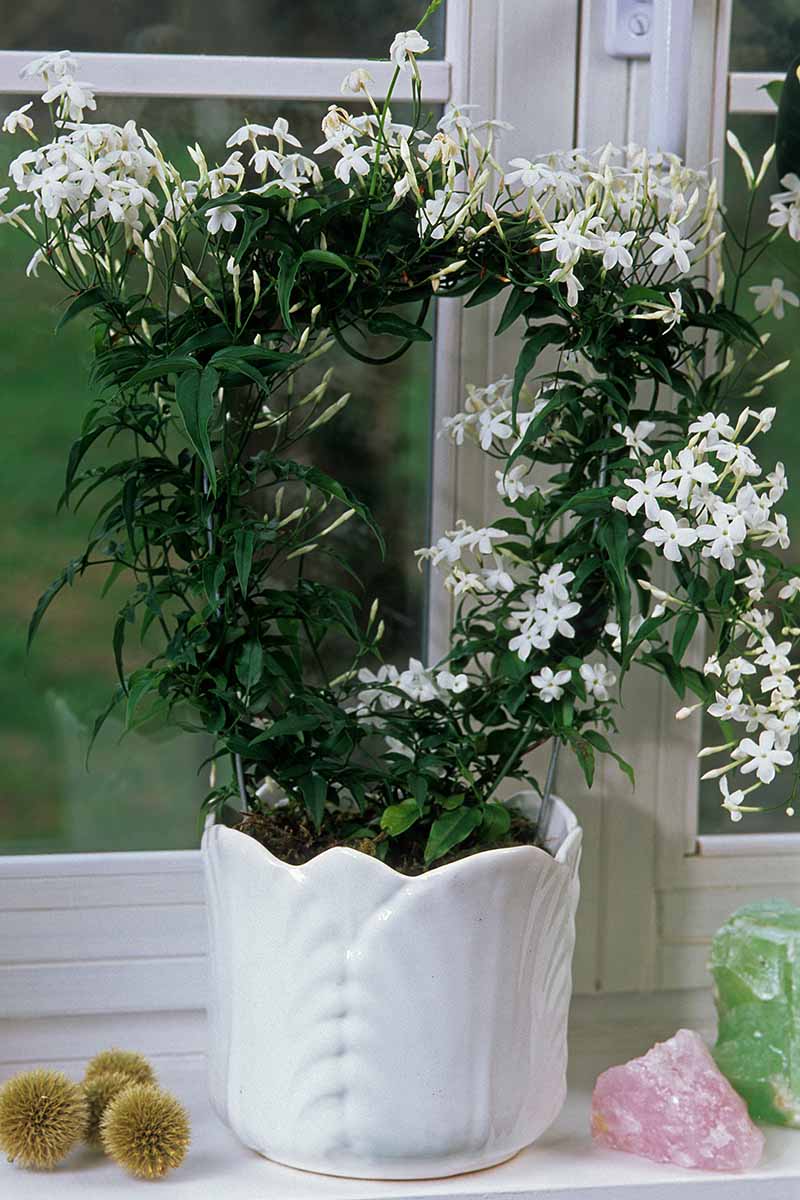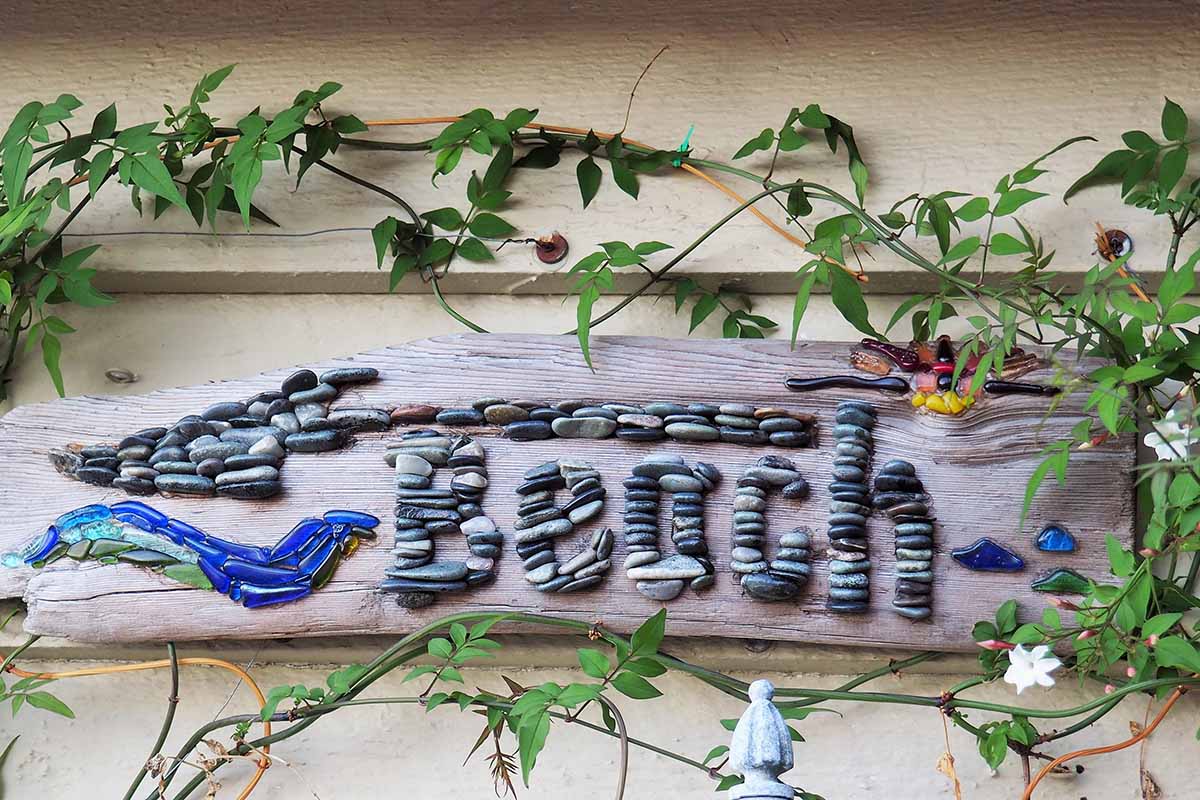Highly ornamental vines and shrubs, they feature dainty flower clusters in shades of white, pink, and yellow, with the popular, summer-flowering poet’s jasmine being a familiar climber in many gardens. We link to vendors to help you find relevant products. If you buy from one of our links, we may earn a commission. There are also hardier, winter-flowering species as well. And even if you don’t have the right climate for these tender vines outdoors, you can enjoy their fragrant blooms indoors because they make superb houseplants as well! Cultivation is easy and carefree, but the vines do require a trellis or other type of support to fully display their fast-growing finery. Indoors or out, the climbing greenery and soothing scent adds a tropical dimension that’s beautiful and unique. So if you need a touch of the tropics in your garden or home, let’s dig into how to grow jasmine in the garden and indoors! Here’s what you’ll find ahead:
What Is Jasmine?
Jasminum is a genus of about 200 species of fragrant, flowering shrubs and vines in the Oleaceae or olive family. True jasmines are long-living plants that climb without tendrils, with the narrow stems twining around supports for vertical growth. The pink, yellow, or white flowers are small and simple, featuring a tubular base and pinwheel or star-shaped profile with single or double petals. However, there are some with more complex forms of overlapping petals, such as the camellia-like cultivar, ‘The Duke of Tuscany.’ Flowering time varies by species, with most garden cultivars flowering throughout summer. However, there are winter-flowering species (J. nudiflorum) and those that flower year-long (J. polyanthum) in the right conditions. The flowers produce a strong, sweet, and fruity fragrance, while the foliage can be deciduous or evergreen and develops in pairs of leaflets. Most species are hardy within USDA Zones 7 to 11, but there are a few with greater cold tolerance down to Zone 6. In areas outside of their required climate, plants are often grown in containers and kept outside for the summer months before being moved indoors over winter. Several other fragrant, climbing vines from other families are commonly given the same name, these are not types of true jasmine. These include popular plants such as Asiatic jasmine (Trachelospermum asiaticum), Cape jasmine (Gardenia jasminoides), star jasmine (T. jasminoides), and night-blooming types (Cestrum nocturnum).
Cultivation and History
Jasmine is native to tropical and warm temperate regions of Africa, Eurasia, and Oceania. Thought to originate either in the Himalayan valleys of India or Persia, plants made their way along ancient trade routes into China, Egypt, and coastal communities of the Aegean Sea. Their cultivation in Europe started in the Islamic gardens of the Spanish Moors in the 12th century, and eventually arrived in northern gardens by the 16th century. The vines then made their way to North America with the early European settlers. The common flower name comes from the Persian word “yasamin” and means “God’s gift.” In China, infusing tea with jasmine flowers can be traced back to the Song Dynasty (960-1279) and plants have been commercially cultivated in Provence, France, for perfume since the mid-1550s. The sweetly tropical fragrance has notes of musk and is still widely used to scent candles, perfumes, and toiletries. In Hawaii, it’s a familiar and fragrant addition to leis, and it’s also the national flower of the Philippines and Indonesia.
Propagation
Plants can be propagated from seed or stem cuttings, but seed germination is slow and spotty.
From Seed
To start outdoor plants from seed, sow about six weeks prior to your last frost date. Soak seeds for 24 hours prior to planting in trays filled with moistened starter mix. Cover the tray with a plastic dome and place it in a bright location or under grow lights. Once seedlings have two pairs of true leaves, transplant each to a 12-inch container. Keep the containers indoors for another four to six weeks, or until warm weather returns, before planting outdoors. Indoor plants can be started at any time of the year.
From Cuttings
Stem cuttings can be taken in spring or summer from semi-ripe or ripe hardwood. Cut six-inch stem sections just below leaf nodes and remove leaves from the lower two inches. Dip cut ends into a rooting hormone and shake gently to remove excess dust. Place each cutting into a six-inch pot filled with damp starter soil. Cover the pots with a plastic bag to retain moisture, then place the pots in a location with bright light but out of direct sun in a warm room. About 75°F. is ideal for rooting cuttings. Keep the soil moist and remove the bag once your cuttings have rooted. Roots form in four to six weeks, but plants will appreciate another month or so indoors to develop a strong root system before planting.
How to Grow
For best performance, jasmine prefers a sheltered location in full to partial sun. Vines need protection from high winds as well as very hot afternoon sunshine. They do best in consistently moist but well-draining, loose, and loamy soil with a pH of 6.0 to 8.0. Summer-flowering types need more sun, while the winter-flowering ones can take a bit more shade, particularly from hot afternoon sunlight. Wet and stony soils should be avoided. Transplant in spring or fall and enrich the soil with a shovelful or two of aged compost or well-rotted manure. To help keep the soil damp, add the same amount of moisture-retentive materials such as coconut coir, peat moss, perlite, or vermiculite. Mix in some bone meal too, for strong root growth. Place plants so they’re at the same soil level in the ground as in their nursery pot. Backfill with soil, firm gently in place, and water lightly. Provide vining types with a trellis or other vertical support to twine and clamber on. Attach vines with plant clips, twine, or garden velcro to get them started – they’ll twine on their own after that. To retain moisture around the roots, apply a two- to four-inch mulch of compost, leaf mold, or straw over the root zone. Potted plants need containers with drainage holes with a layer of drainage material such as broken pottery or pebbles or a screen placed over the holes to avoid standing water. Add moisture-retentive materials to the soil mix as needed. Choose dwarf specimens for indoor plants and locate in a bright location with good air circulation in a cool to warm room – ideal temperatures are between 60 and 75°F. Don’t place plants in front of sunny, west-facing windows to avoid scorching them. Container soil should be kept moist but not wet. Allow the top inch of soil to dry out between watering, and water less in fall and winter. Flowering is typically light in the first two years of growth, but abundant after that.
Growing Tips
Care for these plants is simple and straightforward, and the following tips can help ensure healthy plants with abundant flowers:
Plant vines in a spot sheltered from strong winds.Fertilize in spring just as buds begin to swell, then monthly over the growing season.Keep the soil moist but not soggy.And for indoor growth, choose smaller varieties to keep their size manageable.
Pruning and Maintenance
Outdoor vines and shrubs climb or scramble freely but benefit from a light pruning in spring to prevent wild, unruly growth. In their second year of growth, pinch out tips to encourage branching and bushy growth. After that, use clean, sharp garden snips to cut back stems immediately after flowering, then trim lightly throughout the growing season as needed. Cut stems just above a set of leaves.
Cultivars to Select
For home cultivation, these are among the most commonly grown types. Fertilize outdoor plants with a thick layer of organic compost in early spring or apply a flowering plant fertilizer monthly during the growing season. Flowering plant formulas typically have a higher phosphorus level (the middle number in NPK ratios), like this 4-6-4 Organic Rose Plus Bloom food from Burpee. Organic Rose and Bloom Plant Food Feed container and indoor plants every two to three weeks over the growing season with a half-strength solution of flowering plant food. Repot container plants in spring as needed, trimming roots lightly before planting in fresh soil. In winter, provide a two- to four-inch layer of porous pea gravel to insulate roots against cold temperatures as needed. Spanish or Catalonian jasmine, J. grandiflorum, is a climbing, deciduous to semi-evergreen vine with red-tinged buds and highly fragrant white flowers that bloom in midsummer. A good choice for indoor growth, the vines grow eight to 12 feet and are hardy in Zones 10 to 12. Winter jasmine, J. nudiflorum, is a deciduous scrambling shrub that features lightly fragrant or non-fragrant, single yellow flowers that bloom in late winter, often on bare branches – hence the name nudiflorum. Climbing or cascading, plants grow four to 15 feet and make an excellent ground cover with stems rooting quickly where they touch the ground. One of the hardiest species, it’s suitable for Zones 6 to 9. ‘Mystique’ is a multi-stemmed, variegated type that flowers in January to March. Common or poet’s jasmine, J. officinale, is a deciduous climber that features clusters of intensely fragrant, rosy-pink buds that open to white flowers. This is the species most widely used in the perfume industry. The vines reach an impressive 40 feet and flower in June to August. Plants are hardy in Zones 7 to 11. ‘Argenteovariegatum’ is a variegated hybrid with cream and sage-green leaves tinged in pink, and masses of pink buds that produce white flowers. Climbing or pink jasmine, J. polyanthum, is an attractive evergreen with clusters of handsome burgundy buds that open to clouds of pink or white, star-shaped flowers in late winter and early spring. Plants climb to a mature height of 20 feet and are hardy in Zones 8 to 11. Arabian jasmine, J. sambac, is an evergreen shrub with fragrant, starry white flowers in summer that reblooms lightly year-round. The fragrant oils are used in perfumes and to flavor teas, and plants grow six to 10 feet – and it’s another good choice to grow indoors. This species is hardy in Zones 10 to 11. ‘Grand Duke of Tuscany’ is a popular hybrid with its large, scented flowers.
Managing Pests and Disease
These plants are relatively problem-free but keep an eye open for the following issues: Be sure to check out our supplemental guide, “13 Popular Types of Jasmine Vines and Shrubs,” for more choices.
Sapsuckers such as aphids, scale, and whiteflies can damage stems and leaves and spread problematic fungal diseases. Aphids can be knocked off with a strong spray of water from a garden hose, but scale and whiteflies should be sprayed with a weak solution of soapy water or an application of neem oil. Blight is a fungal infection that appears as dead brown blotches on flowers, leaves, and stems, and it can infect the entire plant. Remove and destroy infected areas and apply a thick layer of mulch to keep spores at bay. Rust and Fusarium wilt are common fungal diseases that cause discoloration, plant collapse, and wilting. Remove and destroy infected portions and spray with a fungicide or neem oil. Repot container plants with fresh soil or replace the top four inches of soil around outdoor plants. Avoid overhead watering, and ensure plants have good air circulation.
Best Uses
Jasmine makes a beautiful and functional statement in many garden settings. The vines make excellent vertical specimens and can be trained to climb on arbors, fences, walls, and other upright structures, or to cover a trellis for an effective and fragrant privacy screen. Many varieties are suitable for container growth and make an outstanding addition to balconies, patios, porches, and outdoor seating areas. The shrub varieties make a strong impact when mass planted as barriers, hedges, and cascading over retaining walls – or as an effective ground cover and slope stabilizer on banks and inclines. And you’ll want to plant some close to windows and doorways to allow their lovely perfume to waft into your home. Indoors, train dwarf plants onto hoops or a small garden obelisk to enjoy their perfumed beauty. Give them moist, rich soil, a sheltered place to climb, and a sunny location for masses of blooms in the garden. And remember to place some by your seating areas and windows for maximum perfumed pleasure! And if you’re outside of their hardiness zone, plant some in containers to bring indoors over winter. How do you folks grow jasmine, indoors or out? Tell us about it in the comments section below. For more info about plants that we commonly call jasmine, check out these guides next:
How to Grow and Care for Winter JasmineHow to Grow Asiatic JasmineHow to Prepare Jasmine Plants for Cold Weather

